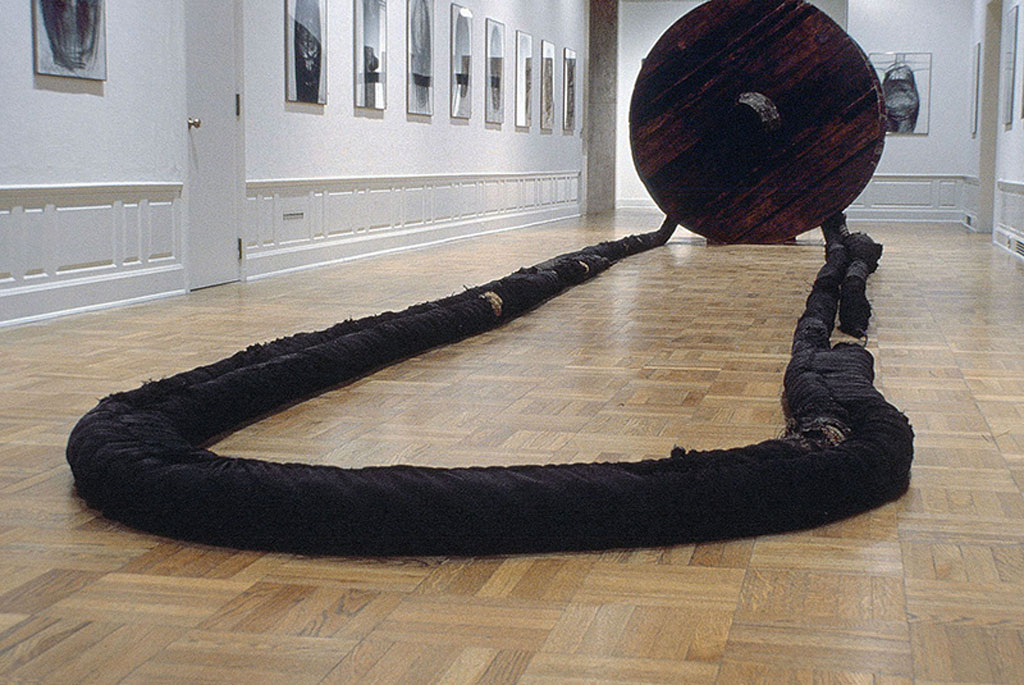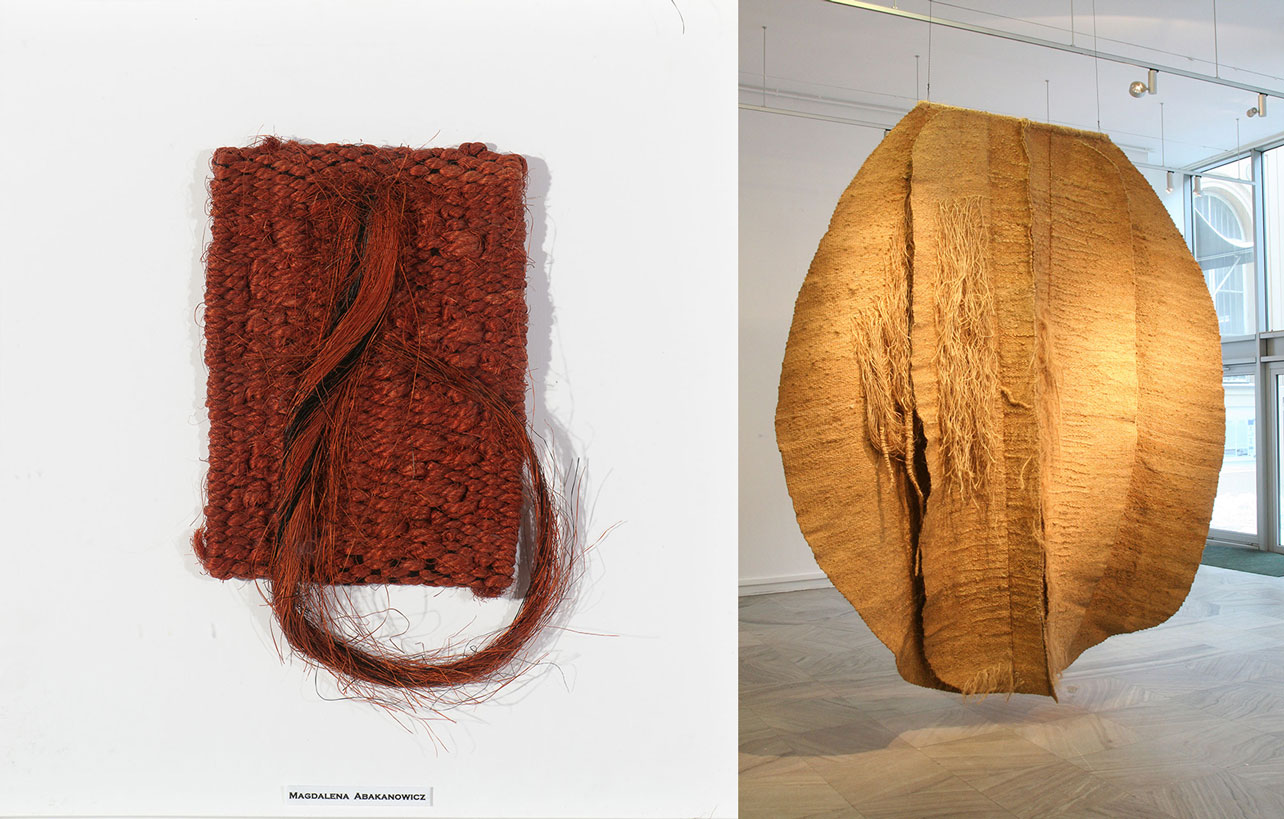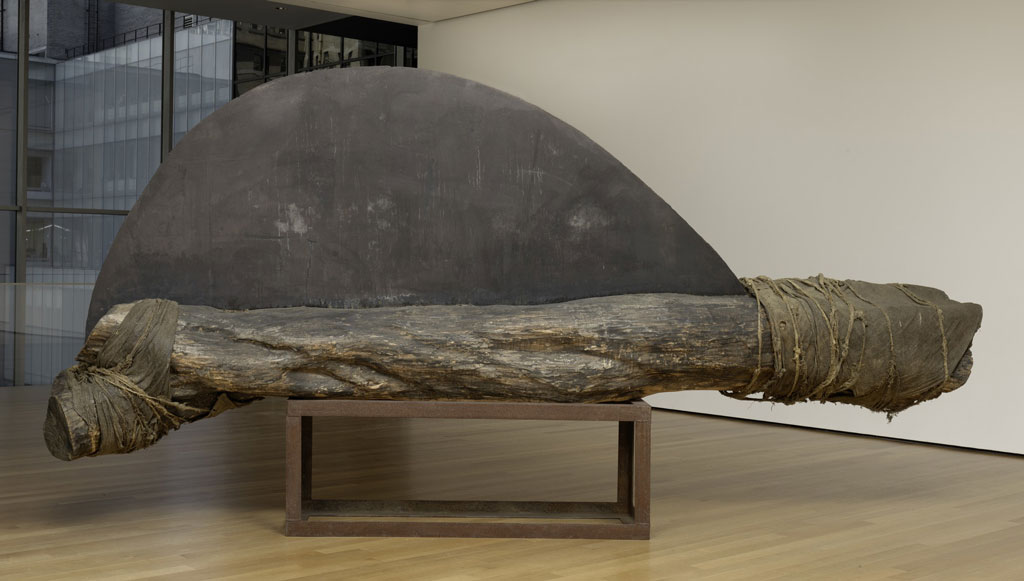ART-TRIBUTE:Weaving and other Practices…Magdalena Abakanowicz
 We continue our Tribute with a relentless innovator, Magdalena Abakanowicz (20/6/1930-20/4/2017), her alchemical transformations of humble materials like rope, burlap, stone and sisal into monumental, moving expressions of power, loss, violence and healing bespeak both her resourcefulness and ambition. Working in these mediums, which were often all that were available in Soviet-controlled Poland and at the time pejoratively associated with craft, the artist claimed a transformative power inherent in the feminine that courses through these works and transcends physicality.
We continue our Tribute with a relentless innovator, Magdalena Abakanowicz (20/6/1930-20/4/2017), her alchemical transformations of humble materials like rope, burlap, stone and sisal into monumental, moving expressions of power, loss, violence and healing bespeak both her resourcefulness and ambition. Working in these mediums, which were often all that were available in Soviet-controlled Poland and at the time pejoratively associated with craft, the artist claimed a transformative power inherent in the feminine that courses through these works and transcends physicality.
By Efi Michalarou
 Born in Falenty near Warsaw, Magdalena Abakanowicz’s (Marta Magdalena Abakanowicz-Kosmowska) lived and worked in Warsaw, studied at the School of Fine Arts in Sopot, Poland (1949), and graduated from the Academy of Fine Arts in Warsaw (1954). Her first major independent achievement was based on using three-dimensional textiles as a medium. Abakanowicz became intimately associated with soft sculptures known as “Abakans”. Abanowicz being interested by the texture of matter, particularly the organic nature of her medium of choice. “Abakans” (a derivation of her family name) made from dyed sisal fibre with its multiplied organic nature was shocking. At exhibitions they were suspended from the ceiling, unidentifiable monsters wrapped in canvas cloth. The artist broke with the tradition of flat surfaces of decorative textiles hung against the walls. Years later she wrote “The Abakans irritated. They were untimely. There was the French tapestry in weaving, pop-art and conceptual art, and here there were some complicated, huge, magical (forms)…” Abakanowicz has remained faithful to the law of the series, preferring sets to individual works. The law, applied in Abakans, was even more manifest in her 1970s exhibition “Organic Structures”. In the space of the gallery she would place a few dozen oval forms made of sackcloth filled with a soft substance. According to the artist, this was an expression of her childhood experience. Abakanowicz’s later series tended likewise to be made from pieces of coarse sackcloth which she sewed and pieced together, bonding it with synthetic resin. This is how she made “Alterations” (1974-75)- twelve hollowed-out human figures sitting in a row; “Heads” (1973-75) a series of enormous, solid forms remindful of human heads without faces; Backs (1976-80). eighty slightly differing negatives of the human trunk; The Crowd I (1986-87), fifty standing figures; “Ragazzi” (1990) forty ‘skins’ stripped off young boys; and Infantes (1992), “30 Backward seated Figures” (1993-44), “7 Dancing Figures” (2001-12). The basic reference of Abakanowicz’s works has been man, his condition and position in modern world, and most of all his confusion by the excess and anonymity in the crowd. This is reflected in her sculptures of the 1980s and 1990s, in which she used new materials: metal (mostly bronze, such as in the series Bronze Crowd, (1990-91) and Puellae (1992), wood, stone, and sometimes clay.
Born in Falenty near Warsaw, Magdalena Abakanowicz’s (Marta Magdalena Abakanowicz-Kosmowska) lived and worked in Warsaw, studied at the School of Fine Arts in Sopot, Poland (1949), and graduated from the Academy of Fine Arts in Warsaw (1954). Her first major independent achievement was based on using three-dimensional textiles as a medium. Abakanowicz became intimately associated with soft sculptures known as “Abakans”. Abanowicz being interested by the texture of matter, particularly the organic nature of her medium of choice. “Abakans” (a derivation of her family name) made from dyed sisal fibre with its multiplied organic nature was shocking. At exhibitions they were suspended from the ceiling, unidentifiable monsters wrapped in canvas cloth. The artist broke with the tradition of flat surfaces of decorative textiles hung against the walls. Years later she wrote “The Abakans irritated. They were untimely. There was the French tapestry in weaving, pop-art and conceptual art, and here there were some complicated, huge, magical (forms)…” Abakanowicz has remained faithful to the law of the series, preferring sets to individual works. The law, applied in Abakans, was even more manifest in her 1970s exhibition “Organic Structures”. In the space of the gallery she would place a few dozen oval forms made of sackcloth filled with a soft substance. According to the artist, this was an expression of her childhood experience. Abakanowicz’s later series tended likewise to be made from pieces of coarse sackcloth which she sewed and pieced together, bonding it with synthetic resin. This is how she made “Alterations” (1974-75)- twelve hollowed-out human figures sitting in a row; “Heads” (1973-75) a series of enormous, solid forms remindful of human heads without faces; Backs (1976-80). eighty slightly differing negatives of the human trunk; The Crowd I (1986-87), fifty standing figures; “Ragazzi” (1990) forty ‘skins’ stripped off young boys; and Infantes (1992), “30 Backward seated Figures” (1993-44), “7 Dancing Figures” (2001-12). The basic reference of Abakanowicz’s works has been man, his condition and position in modern world, and most of all his confusion by the excess and anonymity in the crowd. This is reflected in her sculptures of the 1980s and 1990s, in which she used new materials: metal (mostly bronze, such as in the series Bronze Crowd, (1990-91) and Puellae (1992), wood, stone, and sometimes clay.








